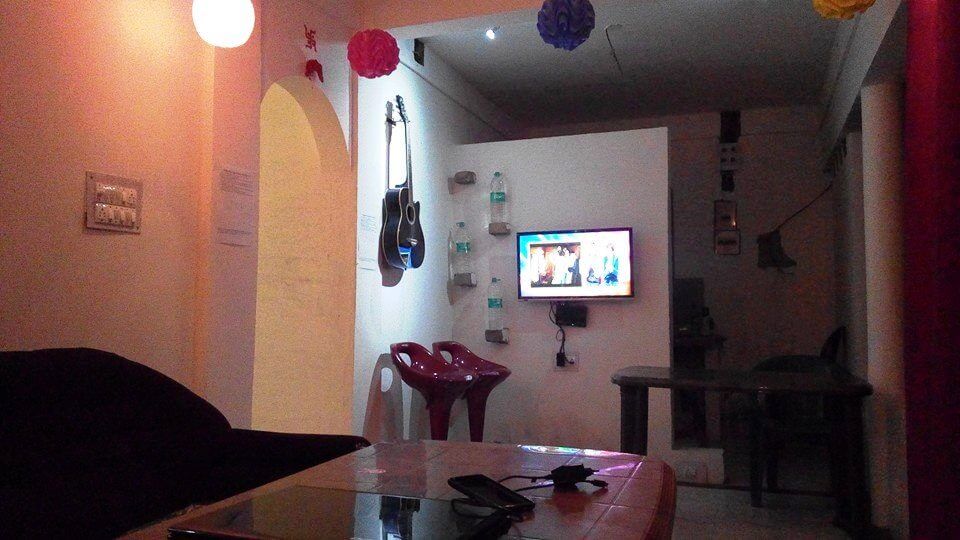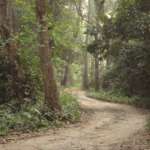Jayanti: Everything You Need to Know and Best Resort to Stay
The "Queen of Dooars", the last untouched pristine destination awaits your arrival | Nomadic WeekendsJayanti: The Enchanting Forest of the Dooars
Deemed as the “Queen of Dooars”, Jayanti is an enthralling beautiful forest hamlet located 30 km from Alipurduar in the Jalpaiguri District of West Bengal. It is situated along the Jayanti River bordering the worldwide famous Buxa Reserve Forest. This is one of the last untouched pristine destinations of Dooars overlooking nature’s bountiful beauty- the lush green dense forest, the once untamed river and the far off hills. Although the Jayanti River remains dry most of the time in a year, the white stone pebbles are strewn all over the river bed and its shores, still form the natural border between the daunting Bhutan Hills. On the eastern side of the river lies the Jayanti Hills while on the western side lies serenely delightful Jayanti village.

Jayanti Location and Whereabouts
As mentioned earlier, Jayanti circumferences along the fringes of the Buxa Tiger Reserve. This Tiger Reserve is not only popularly known for the varied faunal existence but also for the Buxa Fort. The thriving faunal existence ranges from leopards and elephants to spotted deer and peacocks. The abundant greenery of the forest and the fresh oxygen is surely a perfect place to leisure around to escape the regular mundane city life.
The music of the flowing river, the chirping of unknown birds, the rustic woody smell of the forest will refresh your mind and soul. The most fascinating experience of all the things is when you are on your way to the Jayanti village through the Buxa Tiger Reserve. Encountering a herd of elephants or spotted deer or even peacocks is not at all an uncommon sight- in fact it is quite the opposite. The pictorial scenic beauty, the trekking trails, the rustling of the leaves, the sound of the forest wind, and the song of the birds while travelling through the wild will give you the heebie-jeebies.

There are a number of places in and around Jayanti for tourists to visit for sightseeing. One such place is Pokhari. The touristic significance of Pokhari is that here one can see the big-sized Catfish and Turtles in its water. Pokhari is sacrilegious to the local people and its beauty will perplex you leaving you refreshed. Located near the Bhutan border is the Mahakal Cave which is visited by tourists during their vacation to Jayanti. It is a cave temple dedicated to Lord Shiva.
Places to see in and Around Jayanti
Touring or sightseeing in and around Jayanti has a great many options.
The Buxa Tiger Reserve:
Spread over an area of 759 square km, this Reserve Forest not only boasts of having a diversified wildlife existence but also nestles a variety of landscapes too. This Reserve is the largest in the Dooars region and forms a border between Assam and Bhutan. A number of rivers and their tributaries run through this forest creating a comfortable home for birds and animals. In fact, there are a number of unexplored parts in the Buxa Hills, as they lie in the Sinchula Range and are hence not within the reach of the forest authorities.

The Buxa Reserve is the home for 67 different species of mammals, 36 species of reptiles and most importantly 230 types of birds which are still unidentified. This largest Reserve in the Dooars is enriched with floral diversity too. It circumscribes more than eight types of forests. The greatest significance of this Forest Reserve is that it is the pathway for the elephants which migrate between India and Bhutan as the Bhutanese Phipsu Wildlife Sanctuary is nothing but a continuity of the Buxa Tiger Reserve.
Mahakal Caves:
If you are in Jayanti, you must visit the sacred and majestic Mahakal Caves. Dedicated to Lord Shiva, these temple caves are quite a popular visit for pilgrims during the MahaShibratri.
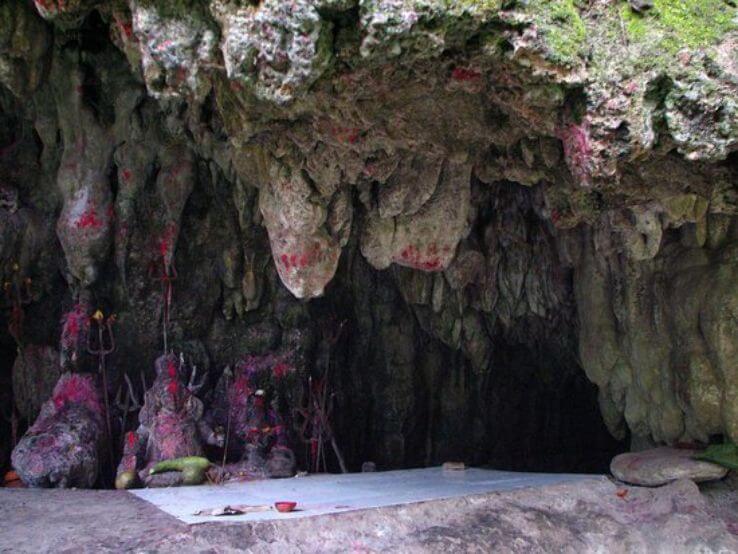
This trek to the Mahakal Temple is also quite popular for bird watching among tourists.
Buxa Fort:
In 1865 the British Govt. of India built the Buxa Fort very strategically, soon after the 2ndDooars War between Bhutan and the British. However, the history engaging it not goes back that far but it was also used during the 1900’s freedom war.

Many Indian freedom fighters used it as a hiding refuge from the British. It is true that today the Buxa Fort stands in ruins and swamps have brought down the stone structure. Nevertheless, it is still worth a visit with all the history surrounding it and of course the surrounding abundance of nature.
Pokhari Hills:
Popular among devotees and locals, the Pokhari Hill is considered sacred for its view of the lake from the top of the hill.
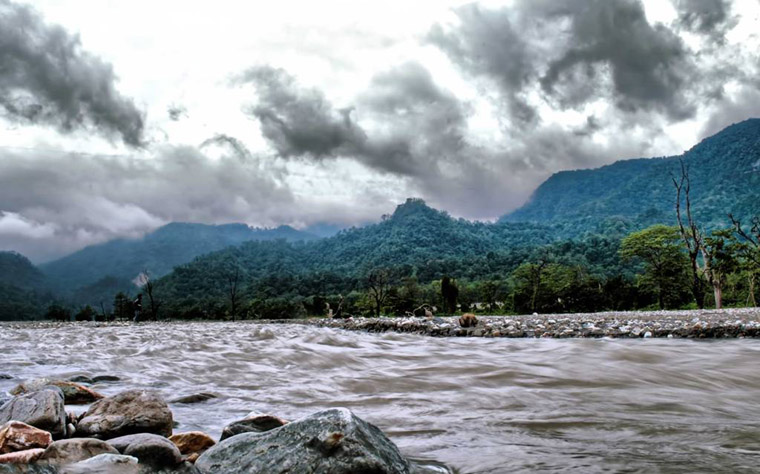
According to legends, the lake in the hills is home to Indian Gods and Goddesses who live in the Jayanti Forest. This hill is popular for another reason- its large collection of Catfish and Turtles.
The Nature Interpretation Centre:
Rajabhatkhawa is a popular place to visit for tourists when they visit Jayanti. It is only 15 km from Alipurduar. Rajabhatkhawa is just the beginning of the famous Buxa Reserve Forest it serves as a gateway. The enchanting scenery along with the lush green forest is worth experiencing.
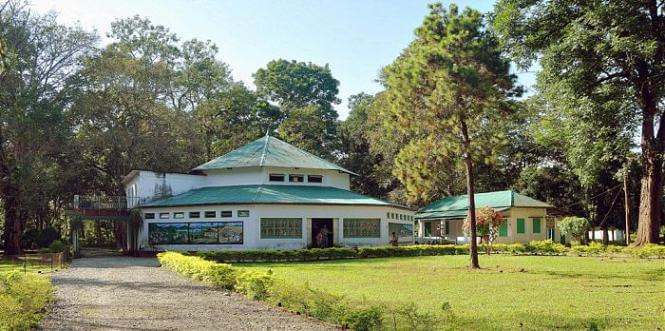
A number of natural trails start from here and go through the dense forests. The Nature Interpretation Centre is not very far from the Buxa Reserve and it provides the tourists with all the need information about the wildlife, flora and avian fauna one can see in the Reserve. Hence, it is a detailed overview of the whopping large Buxa Reserve and what one might chance while touring it.
Jayanti Riverside:
The white pebbled riverside of the Jayanti river is also a must-visit for tourists.
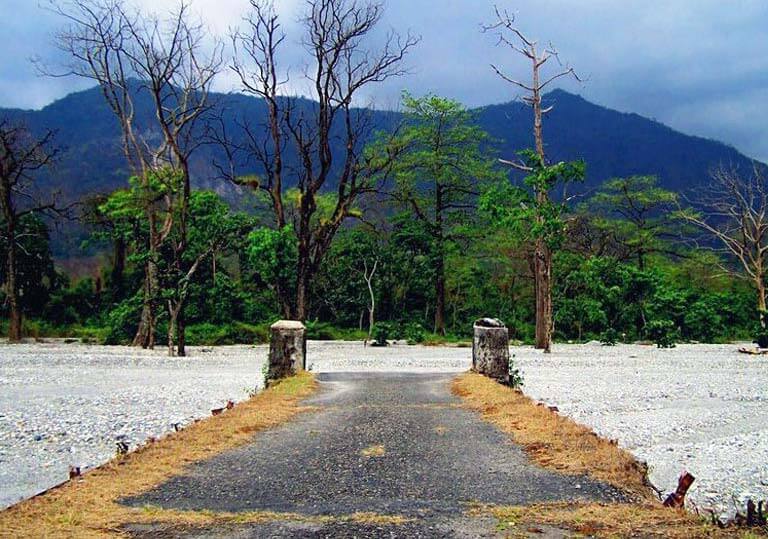
Once untamed, this river has dried over the years but it still persists to hold its charm in its own simple way. The view of the far off hills from the riverside is mindblowing. Hence, it is worth a visit.
Jaldapara Wildlife Sanctuary:
Spreading over an area of 216 square km, this is one of the greatest forests of India to encounter Rhinos. This wildlife sanctuary is located in the Jalpaiguri District and holds more significance with the Torsha River flowing through it.

Apart from the Rhinos, this sanctuary is an abode to a variety of birds like Paradise fly-catcher, Bengal Florican and the racket-tailed Drongo bird.
Coochbehar:
Coochbehar is one of the oldest towns of West Bengal and it boasts of being the largest and the only well-planned city.
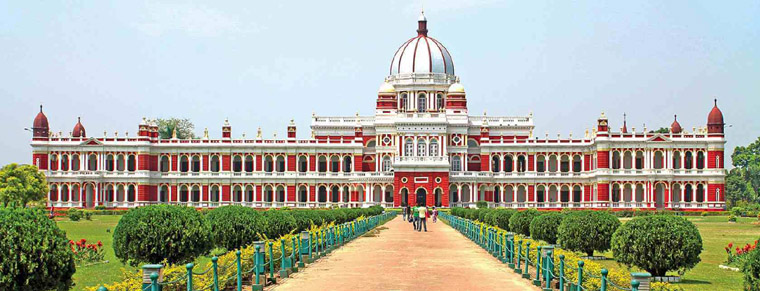
It holds a lot of historical significance for the famous Coochbehar Palace which was built in the model of Buckingham Palace and was also the maternal home to Maharani Gayatri Devi- the third Maharani of Jaipur. Archaeological Survey of India takes care of this palace nowadays.
Totopara:
This village is the home to one of the oldest tribes of India, the Toto tribe. This tribe is one of the most unique tribes of India.
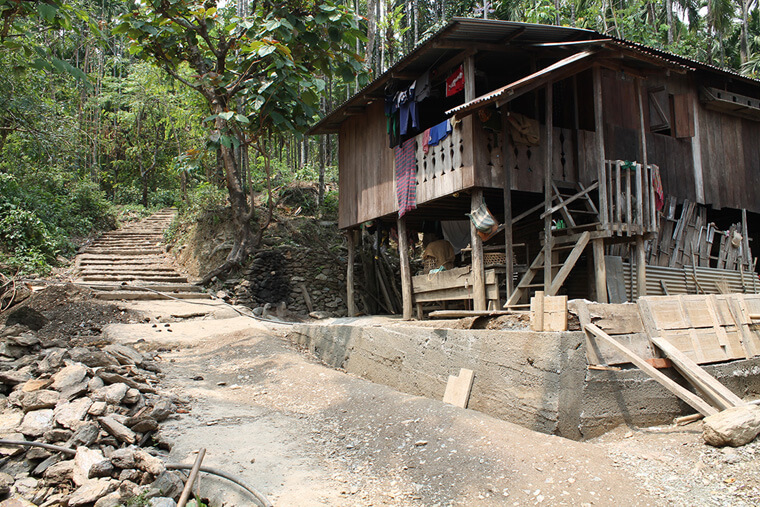
Their village is located right at the beginning of the Jaldapara Wildlife Sanctuary. A visit there will give you the essence of the very rustic lifestyle of a village.
How to Reach Jayanti:
You can choose to travel to Jayanti both by air or rail.
By Air:The nearest airport to Jayanti would be Bagdogra airport in Siliguri. From here, Jayanti is about 195kms. Tourists can easily avail taxis or hire shared jeeps and cars to reach Jayanti.
By Train:If you choose to travel by train, then Alipurduar is the nearest rail junction to reach Jayanti. The distance to Jayanti from Alipurduar is about 30 km. Here too, taxis and hired cars are easily available which will take you directly to this forest. Jayanti is also within reach from Siliguri, Coochbehar and andJaldapara via Rajabhatkhawa.
There are seven weekly trains from Kolkata to Alipurduar. These are the Disha Flag Station Alipurduar Junction Special, The PuriKamakkhya Express and the Karmabhoomi Express. The distance between Kolkata to Alipurduar is about 730kms and takes an average travel time of 15 hours.
Jayanti General Weather and Best Time to Visit:
Since located at the foothills of the Himalayas, Jayanti experiences weather conditions like any other place in Dooars.
Winters: The winters here usually start a little early, around the beginning of November and last till the end of February. However, December and January are the coldest months and temperatures during this time may drop to a minimum of 5 degrees Centigrade. Hence, the winters are considered to be the best months to visit the Dooars region in spite of the cold.
Summers: The summers here in the foothills of Himalayas usually set in March and last till early October. The hottest months during summer are June and July. The summers here experience a temperature ranging from 20 degrees to 31 degrees Centigrade. However, the summers are not sultry or humid. The weather is quite pleasant during the summers and you can roam about comfortably without warm clothes especially during the daytime.
Monsoons: The “Queen of Dooars” has an exclusive charm during the monsoons. Here, monsoons usually set in from the end of July and last till September. The greenery of the foliage surrounding the area is breathtakingly beautiful during these months. However, the Buxa Tiger Reserve Forest does not allow tourist visit from 15th June to 14th September.

Where to stay in Jayanti:
Jayanti provides tourists with a number of options for stays in and around Jayanti. You will find both budget hotels and also the lavish ones. The basic amenities are all well provided to the customers. These hotels usually make arrangements for cars and permits for their visitors. Food quality served is also quite good although mostly they serve Bengali cuisine.There are home stays nestled in the lap of nature of Jayanti hills, you can stay there too. Surrounded by nature on all sides, your stay will be comfortable and cosy, just like you want it to be to rejuvenate yourself.
JSGS Homestay- The best in the Heart of Jayanti
JSGS Homestay is one of our very own nomadic finds. Nestled right in the heart of the Jayanti hills, it is surrounded by the tender forest, the untamed wildlife, overlooking the hills. This homestay lets you experience the rustic and earthy forest life as the theme of it is based on Eco Family Home Tourism yet providing you with all the amenities you are looking for. Be amidst nature and yet experience the homely hospitality here in this homestay. We assure you that once you get here, you will realize your bond with Mother Nature.
The JSGS homestay is more than sufficient in terms of accommodations. There are a variety of rooms with different kinds of amenities from which you can choose as per your needs and requirements. Every room is available at different pricing depending on the amenities they come with. So, it is entirely up to you how you want to stay.
The food served here is of superior quality although they mainly offer Bengali cuisine. However, on request, they can make arrangements according to your exclusive requirements depending on the supplies. They come with food packages as well which usually starts from a minimum of INR450/- only. Nevertheless, the food packages vary as per the rooms you choose to stay in.
Accommodations
There are two types of rooms available here. Each room can accommodate up to 4 people. So staying here with your family in one room will not be a trouble at all. However, even two people can choose to stay in one room. The two kinds of rooms are:
Standard Rooms – Two people can easily stay in these rooms. It can even accommodate up to 4 persons. They also serve complimentary tea or coffee once a day for a maximum of 4 people.
Deluxe Rooms – These rooms too are designed in such a way that they can accommodate up to 4 people. Two people can easily stay in one room. The deluxe rooms come with all modern facilities which include geyser for hot water, and HD television facility. They also serve complimentary tea or coffee twice a day for a maximum of 4 people.
Timings:
Check In: 12.00 PM
Check Out: 11.00 AM
Best Time to Visit:
The winters are the best time to visit Jayanti and the Buxa Tiger Reserve Forest. The weather is cool and comfortable for all the adventures that you are looking for. But most importantly, winters give you the best opportunity to have a meet and greet with a large variety of migratory birds.
However, summers are a good time to visit too. It is better to avoid travelling here during the monsoons. Roads might be rough and rugged and also the Tiger Reserve remains closed during these months.
Activities Near Jayanti:
Park Safari: Going for a safari trip through the dense forests is one of the most popular activities amongst tourists who visit Jayanti. The adrenaline rush as you move along the forest trails and spot all sorts of diversified wildlife- the experience is worth a lifetime. You can hire jeeps or cars from your hotel or from the main office at Rajabhatkhawa. Along with the car they provide you with forest guides who will take you around through the safest ways. They will take you to spots where one can see various faunal existences in the forest. You can also do nature walks along the trails and be in close touch with nature itself.
Bird Watching: If you are an avid bird-lover, then you must have already heard a lot about the forest. The Jayanti forest is a paradise for bird lovers. You will see innumerable varieties of birds and can even hear their singing. You’ll feel your day just went by in a flick of a moment and yet there are still so many birds to see. If you are travelling Jayanti during the winters, then you will come across different kinds of migratory birds also.
Pocket Pinch
NON AC Standard Rooms: INR 1650 + 5% GST per day per head including all meals
AC Deluxe Rooms: INR 1850 + 5% GST Per day per head including all meals
Child Policy:
Babies between 1 to 5 years are complimentary
Toddlers between 6 to 9 years will be charged at half price
Charges for kids above 10 years will be as an adult
We’re ready to help you with planning your Daring Badi Holiday. Enquire Now.
Other interesting places you can visit along with: Dooars – Sisamara Wild Hut, Murti Forest Resort – Dooars, Appu Tea Estate, Dooars Wildlife Resort, Gorumara
In case you love hills, see these great Hill Stations near Kolkata for An Offbeat Getaway








